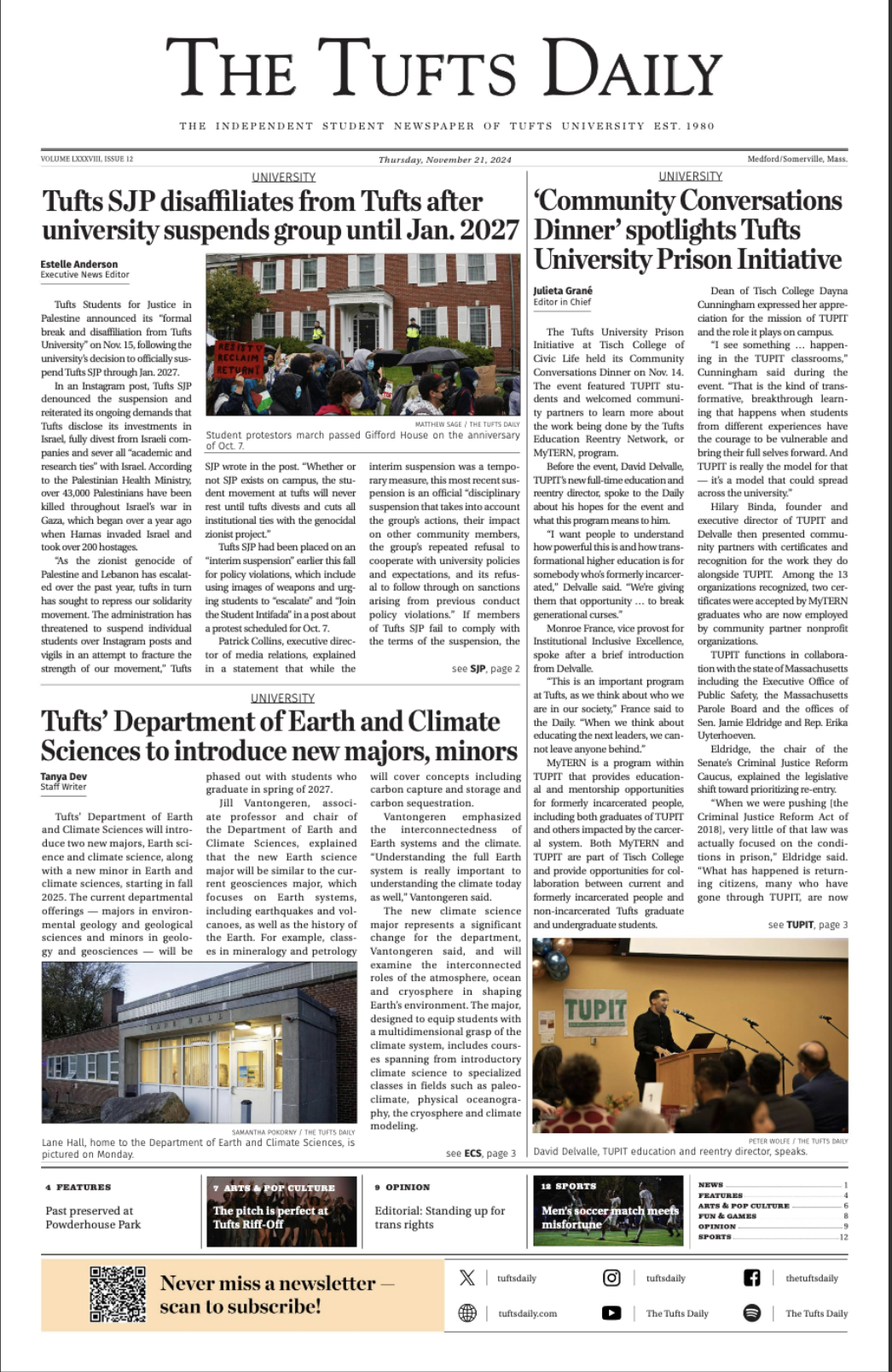When a senior is crying after meeting with the Tufts University Police Department (TUPD) because of the stress of not being able to obtain a specialized parking pass for her ACL injury after weeks of bureaucratic miscommunication, one can’t help but re-examine the role of Student Accessibility Services (SAS). For the past decade, the university and SAS have improved and expanded services to better the academic experience of disabled students. However, the stories of Sidney Beecy, Anjana Gupta and Claire Pernat illustrate SAS’ bureaucratic inefficiency, its lack of communication with students and the still unaddressed needs of the physically disabled.
Under an agreement with the Massachusetts Architectural Access Board (MAAB), the university has made progress in upholding its commitment to redesigning buildings to make them more accessible. Although many dorms, such as West Hall, are only accessible on the ground floor, the university has placed students in handicap-friendly dorms like Harleston Hall and has disability service staff to help address specific needs such as mail delivery. Academically, disabled students can now pick classes in advance, receive help from notetakers and receive alternate formatting of course material.
However, bureaucratic problems have been unearthed. In a 2016 Daily article, Carmen Lowe, then-co-director of SAS, said, “SAS has been ... pooling the resources of other university departments and simplifying paperwork in order to make things easier for students, as well as hiring more staff and working more closely with other parts of the administration.”
In practice, it seems that students have to submit and update inordinate amounts of diagnostic paperwork each semester to continue receiving aid. Moreover, the increased number of staff doesn’t seem to have improved the quality of care provided. The fact that Beecy was so frustrated with SAS’ initial response that she had to consult Dean of Student Affairs Mary Pat McMahon, that Pernat received a leave of absence only after her mother intervened and that Gupta had to outsource to her doctor and physical therapist all show that students did not find adequate assistance within SAS. For an organization that claims to provide “timely, comprehensive and appropriate services for students with disabilities,” the experiences of these students clearly show otherwise.
Such bureaucratic problems may be predicated on communication problems. Central to Beecy’s story is that she couldn’t find essential information on physical disability services on the SAS website. Similarly, Pernat could have reasonably reconsidered her choice of medical leave if she was thoroughly informed about the cumbersome submission of documentation, the length of the process and repercussions regarding class identification. Even if students were clearly informed, intra- and inter-departmental communication is lacking.
The unresponsiveness of SAS to Pernat’s initial email and its sloth in requesting documents is reflective of the disorganization within SAS. It simply shouldn’t have taken several weeks for Beecy to receive a specialized parking pass. The features article rightly observes that there is a lack of structure and informed decision-making within SAS that must be addressed.
Even if SAS’ institutional problems improve, it still has to address the needs of students with disabilities. Commuting between classrooms across campus is an enduring hardship even with academic accommodations, because of the nature of the terrain. Although some buildings may be structurally hard to renovate, the administration should not use that as an excuse to divert resources.
In exchange for making five percent of all rooms on campus handicap accessible, MAAB granted waivers to the university for certain buildings in 2010. This, however, doesn’t change the fact that many dorms and academic buildings are still not easily accessible by disabled students, and the commute, as mentioned by Gupta and Beecy, is as much of an academic impediment as it is a physical struggle.
SAS’ purpose is well described on its homepage: to "partner with the larger campus community to overcome architectural, technological, attitudinal and administrative barriers for students." That statement only stands when it is supported by practice.
More from The Tufts Daily
Did you really come up with that outfit?
By
Olivia Zambrano
| December 4
The good, the bad, the Kennedy
By
Alexander Degterev
| December 4





